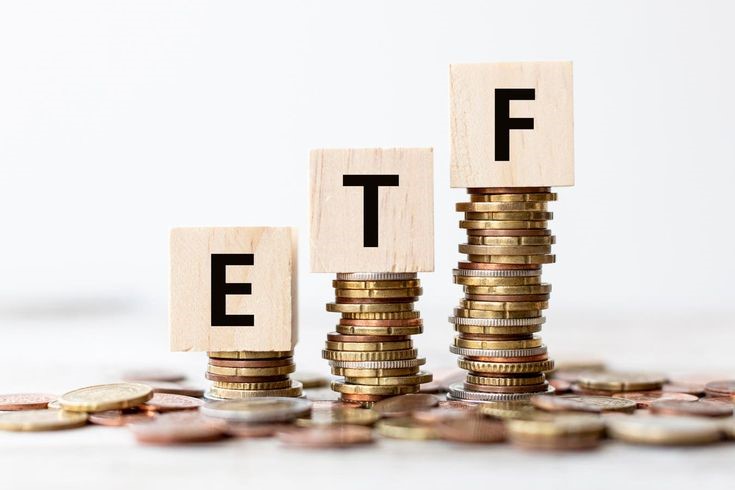Introduction to ETFs
Exchange-Traded Funds (ETFs) have gained significant popularity in the investment world due to their versatility, cost-effectiveness, and ease of trading. Whether you’re a beginner or an experienced investor, understanding ETFs can help diversify your portfolio while managing risk efficiently. This article provides an in-depth guide to ETFs, explaining their structure, benefits, types, and how they compare to other investment options.
What is an ETF?
An Exchange-Traded Fund (ETF) is a type of investment fund that holds a diversified collection of assets such as stocks, bonds, commodities, or other securities. ETFs are traded on stock exchanges, much like individual stocks, allowing investors to buy and sell shares throughout the trading day. Unlike mutual funds, which are priced only at the end of the trading day, ETFs provide real-time pricing, making them an attractive option for active traders.
How ETFs Work
ETFs function by pooling money from multiple investors to create a fund that tracks a specific index, sector, commodity, or strategy. Each share of the ETF represents a proportional interest in the assets held within the fund. This structure allows investors to gain exposure to a broad market segment without needing to purchase individual securities.
Benefits of Investing in ETFs
- Diversification: ETFs provide exposure to a wide range of assets, reducing the risk associated with individual securities.
- Liquidity: ETFs trade on stock exchanges, making them easily accessible and tradable throughout the day.
- Lower Costs: ETFs often have lower expense ratios compared to mutual funds, as they typically track an index rather than being actively managed.
- Tax Efficiency: ETFs are structured to minimize capital gains taxes, making them a tax-friendly investment option.
- Transparency: Most ETFs disclose their holdings daily, allowing investors to see exactly what they own.
Types of ETFs
ETFs come in various forms, each catering to different investment strategies and risk appetites. Some of the most common types include:
- Equity ETFs: Track stock market indices like the S&P 500, providing exposure to a broad market or specific sectors.
- Bond ETFs: Invest in government, municipal, or corporate bonds, offering income generation and stability.
- Commodity ETFs: Track the performance of commodities like gold, silver, or oil, allowing investors to hedge against inflation.
- Sector and Industry ETFs: Focus on specific industries such as technology, healthcare, or energy.
- Thematic ETFs: Invest based on emerging trends such as clean energy, artificial intelligence, or blockchain technology.
- Inverse and Leveraged ETFs: Designed for advanced investors, these ETFs use derivatives to amplify gains or losses based on market movements.
How to Invest in ETFs
Investing in ETFs is straightforward and requires minimal effort. Here are the steps to get started:
- Open a Brokerage Account: Choose a reputable brokerage that offers ETF trading.
- Research ETFs: Consider factors such as expense ratios, historical performance, underlying assets, and investment objectives.
- Determine Your Investment Strategy: Decide whether you want to invest in a broad-market ETF or focus on a specific sector.
- Place an Order: ETFs can be bought and sold like stocks using market, limit, or stop orders.
- Monitor and Rebalance: Regularly review your ETF holdings to ensure they align with your investment goals.
ETF vs. Mutual Funds
While ETFs and mutual funds share similarities, they have distinct differences that investors should consider:
| Feature | ETFs | Mutual Funds |
|---|---|---|
| Trading | Traded throughout the day on exchanges | Bought/sold at end-of-day NAV |
| Costs | Generally lower expense ratios | May have higher fees |
| Tax Efficiency | More tax-efficient due to in-kind redemptions | Higher capital gains taxes |
| Transparency | Holdings disclosed daily | Holdings disclosed quarterly |
| Minimum Investment | No minimum investment required | Often requires a minimum investment amount |
Risks Associated with ETFs
Despite their advantages, ETFs carry certain risks that investors should be aware of:
- Market Risk: ETF prices fluctuate with market movements, leading to potential losses.
- Liquidity Risk: Some ETFs have lower trading volumes, making them harder to buy or sell at favorable prices.
- Tracking Error: ETFs may not perfectly replicate the performance of their underlying index due to fees or management inefficiencies.
- Leverage Risk: Leveraged ETFs can amplify both gains and losses, making them riskier for inexperienced investors.
How to Choose the Right ETF
Selecting the right ETF depends on various factors, including investment goals, risk tolerance, and market outlook. Consider the following when choosing an ETF:
- Expense Ratio: Lower expense ratios lead to higher net returns.
- Liquidity: High trading volume ensures ease of buying and selling.
- Underlying Assets: Understand the securities held within the ETF.
- Performance History: Evaluate past performance, though it’s not a guarantee of future results.
- Fund Provider: Established fund managers like Vanguard, BlackRock, and State Street offer reputable ETFs.
Conclusion
ETFs have revolutionized the investment landscape, providing investors with a flexible, cost-effective, and diversified approach to building wealth. Whether you’re looking to invest in broad markets, specific sectors, or alternative assets, ETFs offer a solution for nearly every investment strategy. By understanding their structure, benefits, risks, and selection criteria, investors can make informed decisions to enhance their portfolios effectively.
